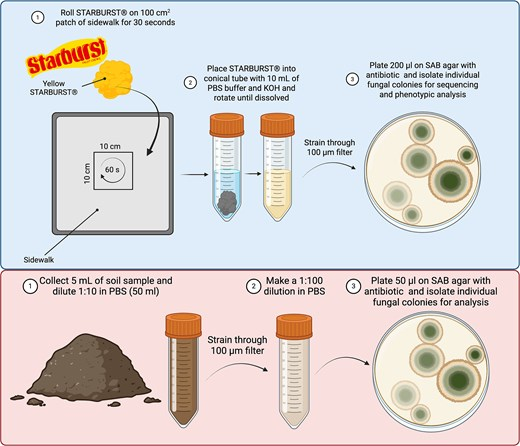Researchers Create the World’s First Complete Cellular Atlas of the Mosquito Aedes aegypti

The most dangerous animal on Earth just became a lot easier to study. Scientists from Rockefeller University’s Laboratory of Neurogenetics and Behavior, together with mosquito researchers worldwide, have created the first-ever head-to-toe cellular atlas of the mosquito species Aedes aegypti — the insect responsible for spreading diseases like dengue, Zika, yellow fever, and chikungunya. This breakthrough, published recently in Cell, provides a detailed map of every cell type and its gene activity across the mosquito’s body, opening up new ways to understand and potentially control these deadly vectors.
What Exactly Is the Mosquito Cell Atlas?
The Mosquito Cell Atlas is the first complete, organism-wide map showing gene expression at single-cell resolution. Using a powerful technique known as single-nucleus RNA sequencing (snRNA-seq), researchers profiled more than 367,000 nuclei collected from 19 different mosquito tissues. These tissues spanned all major body parts and biological systems — including antennae, legs, wings, reproductive organs, brain, gut, and sensory organs — in both male and female mosquitoes.
Earlier studies had looked at mosquito cells organ by organ, but never all together under one consistent method. This atlas brings everything into one comprehensive dataset, allowing scientists to compare cells from any part of the insect’s body side by side.
The project was carried out by the Aedes aegypti Mosquito Cell Atlas Consortium, a collaboration of global experts who wanted to bring mosquito cell biology up to date with the same level of precision achieved in other model organisms like fruit flies, nematodes, and mice.
Why the Focus on Aedes aegypti?
Aedes aegypti is considered the most dangerous mosquito species because it carries and spreads more human diseases than any other. Understanding how it senses, feeds, and reproduces can lead to better strategies for controlling its populations and limiting disease transmission.
Interestingly, the study included both male and female mosquitoes, addressing a long-standing bias in mosquito research. Most earlier work focused on females, since they are the ones that bite humans and animals for blood — necessary for developing their eggs. Males, on the other hand, feed only on nectar. The new atlas ensures that scientists now have equal data coverage on both sexes, revealing previously overlooked features of the male mosquito.
How the Atlas Was Created
To build the atlas, the team used single-nucleus RNA sequencing instead of traditional single-cell methods. This approach is especially useful for insects because it captures cell information even from tissues that are difficult to break down into individual cells.
The researchers organized their study into five biological themes:
- Major body segments (head, thorax, abdomen)
- Sensation and host seeking
- Viral infection
- Reproduction
- Central nervous system
Each of these themes covered several tissue types, making the dataset one of the most complete ever generated for any insect.
The team discovered 69 distinct cell types grouped into 14 major categories, many of which had never been identified before in mosquitoes. Every type of cell was characterized by which genes it expressed, how it compared to similar cells in other species, and what biological role it might play.
Mosquitoes Can Taste Sweetness With Their Legs
One of the most fascinating findings was that mosquitoes have polymodal sensory neurons — special types of sensory cells that respond to multiple environmental cues like temperature, smell, and taste.
Previously, these neurons were thought to exist mainly in the antennae and maxillary palps, the classic “smelling” organs of the mosquito. But now, researchers found them all over the body, including the legs, mouthparts, and even the proboscis.
These sensory neurons allow mosquitoes to detect sweetness and fresh water, helping them find nectar sources and suitable places to lay eggs. The fact that they can taste through their legs gives them an evolutionary advantage in detecting sugars and environmental signals. This sensory flexibility helps them locate hosts, feed efficiently, and navigate their surroundings — all crucial to their survival.
What Happens to the Mosquito Brain After a Blood Meal
Another key part of the research focused on the female mosquito’s brain after it takes a blood meal. Female Aedes aegypti undergo a dramatic behavioral change after feeding on blood — they lose interest in seeking humans and instead concentrate on developing eggs.
To study this shift, the scientists analyzed the gene activity in the female brain at 3, 12, 24, and 48 hours after feeding. They found extensive changes in gene expression, which were most intense in the first few hours after feeding and then gradually returned to baseline.
The surprising discovery was that the glial cells, not the neurons, showed the most dramatic changes. Glia are the support cells of the nervous system, making up less than 10% of brain cells. The finding that glia undergo massive gene-expression shifts suggests they play a major role in controlling behavior, possibly driving the loss of host-seeking activity after feeding.
This insight changes how scientists think about insect brains — glia might be more actively involved in behavioral transitions than previously believed.
Male and Female Mosquitoes Aren’t That Different
Despite their obvious differences in behavior and anatomy, the cellular composition of male and female mosquitoes turned out to be surprisingly similar.
The researchers expected to find major differences, but the data revealed that most cell types are shared between the sexes. The differences lie in how genes are regulated or in expression levels, not in the types of cells themselves.
One rare exception was found in the male antenna, which contains a small cluster of cells expressing a gene not found in any female tissues. The exact role of these male-specific cells is still unknown, but it highlights that even subtle differences can be biologically meaningful.
Why This Matters
This atlas is more than just a scientific curiosity — it’s a powerful new resource for anyone studying mosquitoes. Because the dataset is freely available, researchers worldwide can explore how different mosquito cells express genes related to sensation, immunity, reproduction, or disease transmission.
Having access to this level of detail means scientists can now pinpoint which cells might respond to viral infections or insecticides, and which could be targeted in genetic or chemical control strategies. For instance, understanding how sensory neurons detect humans could lead to better repellents, while knowing how glia control post-feeding behavior could open new ways to disrupt reproduction.
This work also places mosquitoes alongside other organisms that already have whole-body single-cell atlases, such as fruit flies (Drosophila melanogaster) and mice (Mus musculus). The ability to compare data across species allows researchers to identify evolutionary similarities and unique adaptations that make mosquitoes such efficient disease vectors.
The Road Ahead
The research team hopes this atlas will spark new studies across disciplines — from vector biology and neurogenetics to disease ecology and evolutionary biology.
Future projects could include:
- Comparing Aedes aegypti to other mosquito species to find what makes each unique.
- Exploring how pathogen infection changes gene expression in specific cell types.
- Investigating developmental stages like larvae and pupae to complete the mosquito’s life-cycle atlas.
- Linking this cellular data with proteomics and connectomics to understand how mosquito behavior arises from molecular and neural networks.
This resource represents a major leap forward in understanding one of the world’s deadliest insects. By uncovering the inner workings of Aedes aegypti, scientists are getting closer to finding smarter, more targeted ways to control mosquito-borne diseases.
Research Reference:
Goldman, O. V. et al. (2025). A single-nucleus transcriptomic atlas of the adult Aedes aegypti mosquito. Cell. DOI: 10.1016/j.cell.2025.10.008





